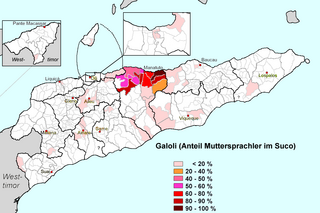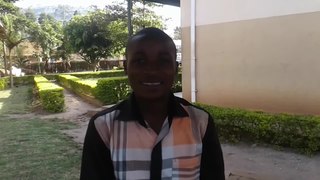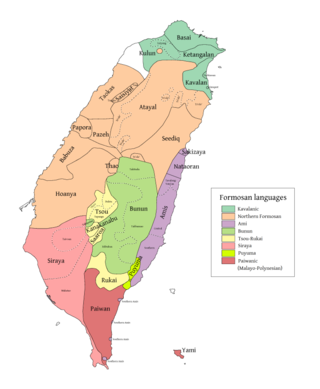External links
| | This article related to an ethnic group in Oceania is a stub. You can help Wikipedia by expanding it. |
| | This Papua New Guinea-related article is a stub. You can help Wikipedia by expanding it. |
Gadsup is a tribal group of people living in Eastern Highlands Province of Papua New Guinea in or near the Aiyura Valley. They are traditional enemies of the Tairora people. They speak the Gadsup language.
Whistled languages use whistling to emulate speech and facilitate communication. A whistled language is a system of whistled communication which allows fluent whistlers to transmit and comprehend a potentially unlimited number of messages over long distances. Whistled languages are different in this respect from the restricted codes sometimes used by herders or animal trainers to transmit simple messages or instructions. Generally, whistled languages emulate the tones or vowel formants of a natural spoken language, as well as aspects of its intonation and prosody, so that trained listeners who speak that language can understand the encoded message.

Venda or Tshivenda, Setswetla is a Bantu language and an official language of South Africa. It is mainly spoken by the Venda people or Batswetla in the northern part of South Africa's Limpopo province, as well as by some Lemba people in South Africa. Setswetla or Tshivenda language is related to Northern Sotho which is spoken in Southern Africa. Setswetla/Venda is a Sotho language that was corrupted by Karanga which came with the Singo people when they invaded the present day Venda from present day Zimbabwe under Dimbanyika. During the apartheid era of South Africa, the bantustan of Venda was set up to cover the Venda speakers of South Africa.

The indigenous peoples of Western New Guinea in Indonesia and Papua New Guinea, commonly called Papuans, are Melanesians. There is genetic evidence for two major historical lineages in New Guinea and neighboring islands: a first wave from the Malay Archipelago perhaps 50,000 years ago when New Guinea and Australia were a single landmass called Sahul and, much later, a wave of Austronesian people from the north who introduced Austronesian languages and pigs about 3,500 years ago. They also left a small but significant genetic trace in many coastal Papuan peoples.

Aiyura is the name of a valley located in the Eastern Highlands of Papua New Guinea. It is the home of the Aiyura Agricultural Research Station, which was operated originally as the "Highlands Agricultural Experiment Station, Aiyura" begun in 1936 by Mr. Bill Brechin, an Australian Agriculturist. In 1937 work was begun clearing the land for the airstrip which is now the home in Papua New Guinea of JAARS, Airstrip IATA code AYU known as Aiyura Airport. Aiyura played a role in World War II when the Aiyura Airstrip was bombed by the Japanese on June 15, 1943, with six bombers and six fighter aircraft.
Tairora is a tribal group of people living in the Eastern Highlands of Papua New Guinea in or near the Aiyura Valley. They are the traditional enemy of the Gadsup.

The Galoli, or Galolen, are a people of East Timor with a population of about 50,000, primarily along the northern coast of the district of Manatuto. To the west lies the Mambai people. There is an old colony on the southern coast of Wetar island, the Talo, who speak the Talur dialect.

Kiga is a Great Lakes Bantu language of the Kiga people (Bakiga). Kiga is a similar and partially mutually intelligible with the Nkore language. It was first written in the second half of the 19th century. Kiga is largely spoken in the ancient Kigezi region which includes about 5 districts, namely Rubanda, Rukiga, Kabale, Kanungu and some parts of Rukungiri. As of 2021, Kiga is spoken natively by about 1.3 million people in Uganda.
Gaj or GAJ may refer to:

The Latin script, also known as Roman script, is an alphabetic writing system based on the letters of the classical Latin alphabet, derived from a form of the Greek alphabet which was in use in the ancient Greek city of Cumae, in southern Italy. It was adopted by the Etruscans and subsequently by the Romans. Several Latin-script alphabets exist, which differ in graphemes, collation and phonetic values from the classical Latin alphabet.
Isoko is an Edoid language, one of the languages in Delta State spoken by the Isoko people in Isoko South, North and part of Ndokwa East Local Government Areas of Delta State, Southern part of Nigeria in Niger Delta region. It is also spoken in some part of Bayelsa. The Isoko language has close similarities between them and Edo people with other Edoid language because it is an Edoid language,the Isoko people are “an ethnic nationality made up of people and their ancestral roots can be traced through history to the Benin (Aka) kingdom, attested to by the linguistic and cultural similarities that exist between the Isoko people and the Benin (Aka)people” although a few of the Isoko communities or clans have their origins attached to the Ibo language and Urhobo language. Some 750,000 people consider themselves Isoko. Language is a mark of identity and plays an all-important role in the life of a people. The Isoko language however, is being threatened with extinction as reported by Idudhe (2002), as a result of neglect in teaching, learning and use. The Isoko language has about 20 to 21 dialects, but the Aviara/Uzere dialect is the standard dialect of the language.

The Kainantu–Goroka languages are a family of Papuan languages established by Arthur Capell in 1948 under the name East Highlands. They formed the core of Stephen Wurm's 1960 East New Guinea Highlands family, and are one of the larger branches of Trans–New Guinea in the 2005 classification of Malcolm Ross.
Bakumpai is an Austronesian language belonging to the West Barito languages. It is spoken by about 100,000 Bakumpai people living in the central Kalimantan, Indonesia.
Aka, also known as Yaka or Beka, is a Bantu language spoken in the Central African Republic and Republic of Congo, along the Ubangi River dividing the two countries.
Gadsup is a Kainantu language spoken by the people of the same name in Papua New Guinea.

Sakizaya is a Formosan language closely related to Amis. One of the large family of Austronesian languages, it is spoken by the Sakizaya people, who are concentrated on the eastern Pacific coast of Taiwan. Since 2007 they have been recognized by the Taiwan government as one of the sixteen distinct indigenous groups on the island.
Binumarien, or Afaqinna ufa as it is known to its speakers, is a Kainantu language of Papua New Guinea. The name used in the literature was used under Australian administration and is still used by Binumarien people when they speak Tok Pisin. It comes from the now-abandoned village of Pinumareena. Pinumareena is also one of the four Binumarien clans.
Alas, Alas-Kluet, or Batak Alas, is an Austronesian language of Sumatra. The three dialects, Alas, Kluet, and Singkil (Kade-Kade), may not constitute a single language; Alas may be closer to Karo, and the others closer to Dairi. By linguistic affiliation, Alas–Kluet belongs to the Batak subgroup. Ethnically, however, its speakers generally do not identify as Batak, mostly because of their religion.
Gadsup may refer to:
Baduy is one of the Sundanese-Baduy languages spoken predominantly by the Baduy people. Native speakers of the Baduy language are spread in regions around the Mount Kendeng, Rangkasbitung district of Lebak Regency, Pandeglang Regency and Sukabumi, West Java, Indonesia. It is estimated that there are 11,620 speakers as of 2010.

Gadsup/Tairora Rural LLG is a local-level government (LLG) of Eastern Highlands Province, Papua New Guinea. The Gadsup language and Tairora language are spoken in the LLG.